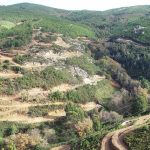Increased demand for Portugal’s historic villages
Portugal’s historic villages are increasingly in demand from tourists as is the accommodation to host them, with buoyant bookings for this summer.
According to Dalila Dias, the coordinator of a body that helps manage Portugal’s historic villages (Estrutura de Gestão e Coordenação do PROVERE das Aldeias Históricas) forecasts for accommodation bookings and visits to historic villages for the Easter period show a “clear and growing demand which shows a recovery in tourist activity”.
According to Dalia Dias, who says bookings have been up overall except for January this year, pre-bookings have also been made for the summer period, although hotels, lodges and guest houses are not yet fully booked.
Among the nationalities which have made pre-bookings are US, German and French, although the bulk of bookings have come from the Portuguese, followed by the Spanish.
Portugal’s historic villages include picture-postcard places like Almeida, Belmonte, Castelo Mendo, Castelo Novo, Castelo Rodrigo, Idanha-a-Velha, Linhares da Beira, Marialva, Monsanto, Piódão, Sortelha and Trancoso.
In January, the Association for the Historic Villages of Portugal Tourism Development (Associação de Desenvolvimento Turístico Aldeias Históricas de Portugal) announced the different available tourist routes which were registered in 2021 and which included over 105,000 routes for walkers, hikers and bikers, saying that the destination is “increasingly popular among tourists that like sporting and radical activities and nature”.
Many of Portugal’s historic villages are near to the Spanish border and are the result of generations of kings who were concerned about territorial defence and decided to fortify the area.
The areas also happen to boast natural parks and landscapes of outstanding natural beauty such as the Portuguese Beira, Serra da Marofa, Serra da Estrela Natural Park, Gardunha and the Natural Reserve of Malcata.










